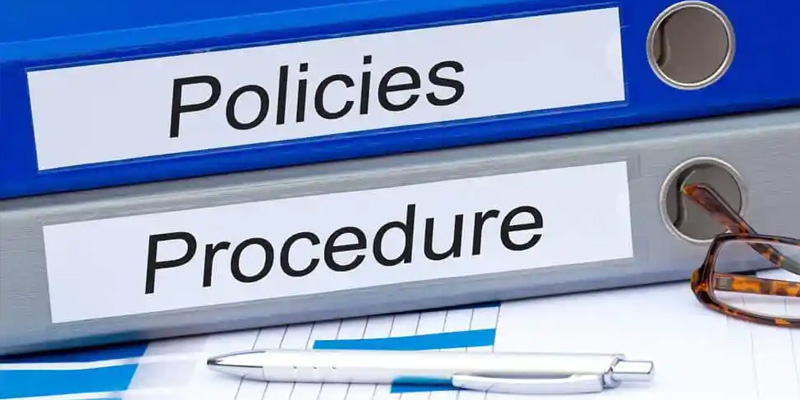
ISO 9001 audit checklist
The ISO 9001 standard provides companies with the criteria to improve the qua...
Read MoreDocument control is a crucial part of implementing ISO 9001, achieving compliance, and erecting an efficient Quality Management System (QMS). This article explores the requirements to help you understand how document control can lead to the implementation of an effective QMS and can scale your business.
The ISO 9001:2015 standard mandates that organisations should obtain control over their documents, so as to preserve the accessibility of sensitive data of the QMS to the right individuals. Maintaining control over the documents ensures that no unauthorised individuals can make changes to the content of the QMS.
Essentially, the standard states that document control are necessary to ensure that the documents are easily available and suitable for their usage, whenever and wherever required. Additionally, document controls protect the adequacy of the data, that is protecting it from improper usage, confidentiality, or changes in integrity.
Here the ISO 9001 consultant plays an important role. A professional and experienced consultant will help you pass the document control stage successfully.
The purpose of document control is to consistently apply standards throughout the organisation by requiring controls over the distribution as well as accessibility of all information related to the QMS.
This helps to ensure that the QMS remains reliable as the company can always define and share the details of their processes and best practices internally as well as externally to the certification body auditors.
Section 7.5.3 states that having adequate document control is a mandatory part of ISO 9001:2015 obligations and the implementation should vary as per the requirements of the organisation.
When we are talking about the QMS and its implementation, it is worth noting that the standard also states that an organisation should maintain documented information to the extent necessary to support the operations of processes adequately and retain documented information to the extent to increase confidence in the processes that are being carried out.
This statement implies that documented information should vary from organisation to organisation and heavily depends upon the operations of an organisation. For example, ISO in construction industry requires different information than ISO in the textile industry.
Hence, documented information should remain relevant to the size of the organisation and should be an accurate reflection of its activities, processes, products and services. The documented information should also mirror the complexity of the processes and their interactions, trying to present a simplified snapshot to the internal management team as well as any auditors that have to measure the interactions.
Lastly, Documented information is also a reflection of the competence of the persons within the organisation, which means that it should be written in such a manner that all individuals within the organisation can gain an understanding of the QMS by reading the documented information.
Before we discuss the general documentation requirements as per ISO, we would like to take a minute to re-emphasise the importance of customisation. The documents of one organisation may not work for you. Your documents should reflect your organisation and its culture. If you know how to get an ISO certificate, you can control the documents according to the conditions of your organization.
Hence, even though a quality manual is not needed in the latest version of the standard, it may make sense for your organisation. Read the following requirements with a pinch of salt.
ISO does not specify the format or the structure of the quality manual but states that it is a document that contains the entire description of the QMS including all documented procedures, work instructions and quality objectives. With the help of ISO consulting, you can choose the structure and format of your quality manual in a way that conforms to ISO standards.
Although it is not mandatory as per the latest revision of the standard, some organisations maintain a quality manual because:

ISO requires organisations to take control, or in simpler words, maintain the effectiveness of the documents that contain the descriptions of the following activities:
Additionally, there are certain documents that your organisation may need to demonstrate the effectiveness of your QMS. These documents also need to be controlled and examples include the quality policy, quality objectives, quality manual, process maps, process flowcharts or process descriptions, organisational charts, specifications, test instructions, communication channel documents, production schedules, approved supply list, test and inspection plans and quality plans.
Some additional records may also be needed by your company to demonstrate conformity to processes and products. While ISO does not have any specifications for controlling records, one must remember the distinction between documents and records. As per ISO, documents are modifiable and records serve the sole purpose of storing observed data.
Document control helps to maintain the validity of all documents related to the QMS, helping to preserve the integrity of the data. As a result, only the authorised personnel can make changes to the QMS-related documents, helping to preserve its efficiency. ISO states that documents must be a reflection of the organisation and its processes, and therefore, document control varies from one organisation to the other.
To maintain the validity of documents related to QMS and document control, the best option is to use ISO consulting services. An experienced and reliable professional ISO consultant can solve many challenges for you. To get started, it is enough to contact ISO Council consultants to benefit from ISO 9001 consulting services and other widely used ISO standards.
ISO certification gives your organisation a competitive edge. By helping you increase operational efficiency and overall product consistency, your business credibility and authority will soar to new heights.

Copyright © 2025 The ISO Council | Privacy Policy